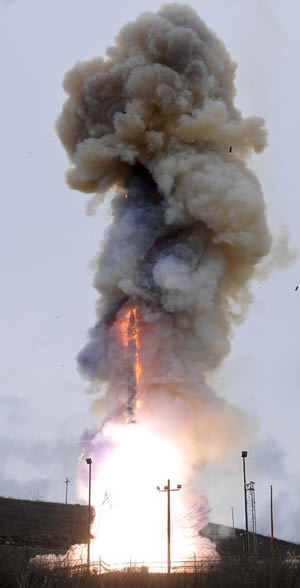
The U.S. missile defense system failed an intercept test earlier today, as a Ground Based Interceptor failed to destroy an intermediate-range ballistic missile target launched from the Kwajalein Atoll, over 7,500 km (4,600 miles) across the pacific Ocean. The test was delayed from Dec. 14 due to weather conditions.
According to the U.S. Missile Defense Agency that conducted the test, all the elements seem to be functioning well – the target was launched as planned, the Sea Based X-Band radar (SBX) and all sensors also performed as planned and the long-range ‘Ground Based interceptor’ missile also launched as planned, from Vandenberg Air Force Base, Calif., and successfully deployed the Exoatmospheric Kill Vehicle (EKV). Yet, with all performers in place, the system did not score an intercept.
Earlier this year the two-stage GBI is performed successfully on a flight test, as part of a future development toward enhanced, future missile defense applications. This test did not include a target intercept but the new missile did deliver an EKV to a designated point in space. After separating from the second-stage booster, the kill vehicle executed a variety of maneuvers to collect data to further prove the performance of the kill vehicle in space.

















